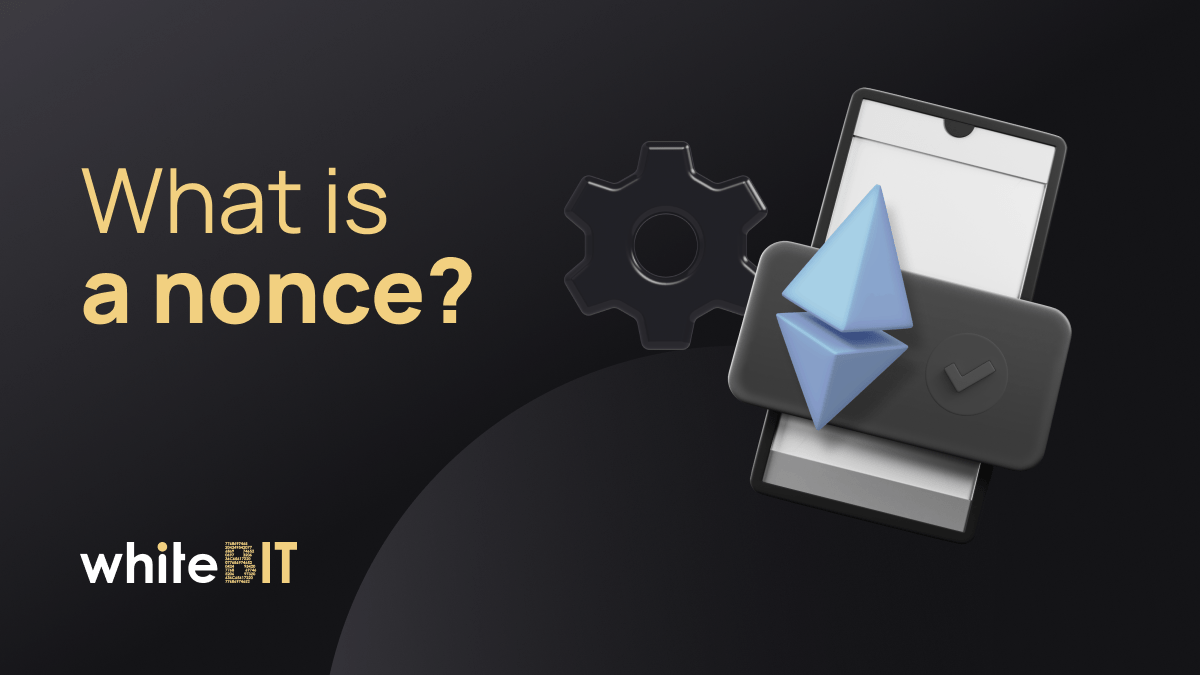How to Create a Well-Balanced Cryptocurrency Portfolio?

Content
- What Is a Crypto Portfolio?
- Types of Cryptocurrency Portfolios
- How to Diversify Your Crypto Portfolio?
- Diversification Strategies in the Cryptocurrency Market
- Types of Cryptocurrencies for a Well-Diversified Portfolio
- Choosing the Right Coin for Your Crypto Portfolio
- Example of a Balanced Crypto Investment Portfolio
- Portfolio Management Strategies
- How to Track Your Crypto Portfolio?
- Conclusion
Every cryptocurrency trader inevitably confronts a pivotal question: How to make a cryptocurrency portfolio that promises potentially lucrative returns and shields itself from the caprices of risk? Learn how to buy crypto wisely. Join us on this journey into the heart of crypto investment, where we’ll uncover the art and science of crafting a resilient portfolio that stands the test of time.
What Is a Crypto Portfolio?
At its essence, a crypto portfolio is a carefully chosen and strategically combined selection of digital assets made to achieve the investor’s financial goals. Similar to traditional investment portfolios, a cryptocurrency portfolio serves as a manifestation of the investor’s vision, risk tolerance, and financial aspirations.
In the following pages, we’ll explore crypto portfolio allocation, emphasizing the importance of tracking and managing cryptocurrency portfolios. Discover the crypto portfolio meaning and the art of diversifying your portfolio, understanding how diversification reduces risk and maximizes profit potential.
Types of Cryptocurrency Portfolios
By Balance
When building a cryptocurrency portfolio, it is prudent to categorize assets into low-risk, medium-risk, and potentially high-risk investments, albeit with high-profit potential. This approach aims to strategically allocate assets for optimal risk and reward.
Diversifying investments is crucial to attaining an acceptable balance between risk and profitability. A diversified cryptocurrency portfolio distributes risk across different coins or tokens, mitigating the impact of market fluctuations on individual assets.
For instance, allocating a portion of funds to established coins like Bitcoin or Ethereum can provide portfolio stability. Meanwhile, the inclusion of promising altcoins enhances the potential for portfolio growth. The key lies in finding a balance that aligns with the investor’s risk tolerance and financial objectives.
According to the Risk Profile
Risk is an inherent aspect of any investment venture. Thus, comprehending the potential risks your portfolio may encounter is crucial in shaping your asset lineup. Investors exhibit varying risk tolerances, resulting in portfolio risk profiles ranging from conservative to aggressive.
For those inclined towards a conservative approach, a portfolio comprising more stable and widely accepted cryptocurrencies fits the bill. Bitcoin, often regarded as a store of value in crypto, may serve as a cornerstone for a low-risk portfolio. Conversely, altcoins are prone to sudden price fluctuations due to market trends. They appeal more to investors comfortable in high-risk environments, seeking to integrate promising projects with significant growth potential into their portfolio.
Risk management is not just about potential losses but also about optimizing the potential for profit. Utilize tools like a crypto portfolio tracker to monitor and assess the risk exposure of your holdings. Regularly reassess your risk tolerance and adjust your portfolio accordingly to maintain a dynamic equilibrium between potential returns and potential losses.
By Investment Period
The investment time horizon is a critically important factor in crafting a cryptocurrency portfolio. Different assets exhibit varying levels of volatility and growth potential over distinct time spans. Aligning investments with the expected holding period allows for a more targeted and efficient portfolio-building strategy.
Short-term portfolios may focus on assets with high liquidity and volatility, facilitating rapid trades to capitalize on market fluctuations. These portfolios often involve more active management and vigilant use of a crypto portfolio tracker to seize short-term opportunities.
On the other hand, long-term portfolios primarily leverage established cryptocurrencies with a track record of stability and growth. Patiently holding onto assets can yield substantial returns over time. A well-crafted long-term cryptocurrency portfolio combines conservative assets with carefully chosen promising projects, striking a balance between stability and growth potential.
How to Diversify Your Crypto Portfolio?
Diversification of the crypto portfolio is a fundamental principle for mitigating risk and maximizing potential returns in the unpredictable realm of digital assets. The tenets of diversification entail distributing investments across different assets, sectors, or applications to create a resilient portfolio resistant to market fluctuations in your cryptocurrency wallet.
Crypto portfolio diversification guards against the volatility inherent in the cryptocurrency market. While individual coins may experience dramatic price swings, a diversified portfolio can provide stability by offsetting losses in one asset with gains in another. The key is not to put all your eggs in one basket but rather to spread your investments across a variety of assets.
Asset Types and Categories
Begin by categorizing cryptocurrencies based on their utility, such as stores of value, platforms, and decentralized finance (DeFi) tokens. Allocate a proportionate amount to each category to balance your portfolio.
Market Capitalization
Consider the market capitalization of each cryptocurrency. A mix of large-cap, mid-cap, and high-potential small-cap coins can add layers of diversification, preventing your portfolio from being overly influenced by the performance of a single asset class.
Geographical and Sectoral Diversification
Extend your diversification strategy beyond types of cryptocurrencies. Consider geographical and sectoral diversification to further spread risk. Different regions and industries may experience unique regulatory environments and market dynamics.
Risk and Reward Balance
Evaluate the risk and reward potential of each asset. While high-risk, high-reward tokens can be enticing, maintaining a balance with more stable assets can help control overall portfolio volatility.
Adaptability
Be prepared to adapt your portfolio as market trends change. Regularly reassess your portfolio to ensure it aligns with your risk tolerance, investment goals, and market conditions. Stay informed about emerging technologies, regulatory developments, and shifts in investor sentiment to make informed decisions.
Maintaining Balance
Striking the right balance between risk and stability is crucial. Don’t be swayed by short-term market fluctuations; instead, focus on the long-term objectives of your portfolio.
Diversification Strategies in the Cryptocurrency Market
Creating a diversified portfolio demands a nuanced understanding of potential risks associated with various assets and aligning them with your unique investment goals. Let’s explore three distinct diversification strategies tailored to different risk profiles: Conservative, Moderate, and Risky.
Conservative Diversification Strategy
For those inclined towards a conservative approach, stability and capital preservation take precedence. A conservative crypto portfolio might include:
- Established Leaders: Allocate a significant portion to well-established cryptocurrencies like Bitcoin and Ethereum;
- Stablecoins: Integrate stablecoins to provide a buffer against market volatility;
- Trustworthy Tokens: Include reputable altcoins with a proven track record.
Moderate Diversification Strategy
Moderate risk-takers seek a balanced approach, combining stability with growth potential. A moderate crypto portfolio may include:
- Established Leaders: Allocate to major cryptocurrencies like Bitcoin and Ethereum;
- Mid-Cap Assets: Include promising mid-cap coins with growth potential;
- Diversified Sectors: Explore different cryptocurrency sectors such as DeFi, NFTs, Layer2, Zero-knowledge and blockchain platforms.
Risky Diversification Strategy
Investors chasing higher returns at the expense of increased risk might include the following assets in their risky portfolio cryptocurrency:
- High-Potential Altcoins: Allocate a substantial portion to emerging projects with high growth potential;
- ICO Investments: Participate in Initial Coin Offerings (ICOs) for early access to promising projects;
- Active Trading: Engage in active trading to capitalize on short-term market movements.
These strategies involve purchasing diverse assets with varying degrees of management intervention. Regardless of risk level, effective cryptocurrency portfolio management entails the following:
- Regular Assessment: Use a crypto portfolio tracker for continuous evaluation and adjustment.
- Risk Management: Understand and manage the risks associated with each asset.
- Adaptability: Be flexible to market changes, adjusting your portfolio as needed.
As reiterated, investments inherently carry risks. Conservative portfolios offer lower returns but are more stable than strategies involving moderate or aggressive risk. The choice of the right strategy hinges on your risk tolerance, investment goals, and market comprehension.
Types of Cryptocurrencies for a Well-Diversified Portfolio
Diversifying your crypto portfolio involves understanding the different types of assets and strategically allocating them to achieve a balanced and resilient investment. Let’s explore key categories that contribute to a comprehensive crypto portfolio.
Payment Coins
Cryptocurrencies designed for transactions, such as Bitcoin (BTC) and Litecoin (LTC), function as digital currencies utilized for conducting transactions within their respective blockchain networks.
Stablecoins
Stablecoins like Tether (USDT) and USD Coin (USDC) maintain a stable value as their worth is pegged to fiat currencies (like the US dollar) or other assets (such as gold).
Security Tokens
Representing ownership rights over tangible assets (like real estate or securities), security tokens bridge the gap between the traditional financial system and blockchain.
Utility Tokens
Utility tokens provide access to services or programs within blockchain platforms or confer advantages to their holders based on the number of tokens held.
Governance Tokens
They are essential for participating in voting on changes in decentralized finance platforms. The governance tokens often offer perks to their owners, with their value typically tied to the project’s success and popularity.
NFT (Non-Fungible Token)
NFTs represent unique digital assets, often associated with art, gaming, collectibles, or virtual real estate.
There are numerous other approaches to categorizing cryptocurrency types for an investment portfolio: by industry, blockchain, country, consensus algorithm, and more. When crafting a well-balanced investment portfolio, careful asset distribution among different categories is essential, contingent on the investor’s vision.
Choosing the Right Coin for Your Crypto Portfolio
Diversification plays a pivotal role in constructing a cryptocurrency portfolio, and prioritizing stable, proven coins forms a robust foundation. Here are key factors and guidelines that can aid in selecting assets for a cryptocurrency portfolio.
Prioritizing Stable and Proven Coins
Take, for instance, BTC and ETH. These coins have exhibited stability over time, making them a dependable cornerstone for your investment strategy.
Rules for Selecting Assets for a Crypto Portfolio
When evaluating potential coins for your portfolio, consider the following rules to make informed decisions:
- Liquidity: Opt for coins with high liquidity to ensure ease of buying or selling without significant price slippage;
- Capitalization: Assess the market capitalization of a coin to gauge its overall value and potential for growth;
- Prospects: Evaluate the long-term prospects of the coin, considering its use case, technology, and adoption potential;
- Project Financing: Examine the financial backing of the project to ensure sufficient resources for development and sustainability;
- Community: A vibrant and engaged community is indicative of a healthy project. Consider the level of community support and involvement;
- Project Team: Assess the expertise and experience of the project team. A strong and capable team increases the likelihood of project success;
- Roadmap Development: Review the project’s roadmap for development milestones. A clear and achievable roadmap demonstrates project commitment;
- Roadmap of Listing on Exchanges: A well-planned exchange listing strategy can enhance a coin’s liquidity and visibility in the market;
- Risk Tolerance: Align your coin selection with your risk tolerance. Some coins may carry higher risks but offer greater potential returns.
By adhering to these rules, you can build the best crypto portfolio that not only includes stable and proven coins but also incorporates assets with growth potential.
Example of a Balanced Crypto Investment Portfolio
Crafting a balanced portfolio requires a thoughtful approach to diversification, risk management, and strategic allocation. Let’s delve into well-balanced crypto portfolio examples.
Portfolio Composition
Foundation Stones — 40%
- Bitcoin (BTC): Users often allocate a substantial portion to the pioneer of cryptocurrencies, which provides stability and acts as a store of value in the portfolio;
- Ethereum (ETH): As the second-largest coin by market capitalization, Ethereum stands out as a compelling option. It not only holds monetary value but also serves as a platform for decentralized applications (dapps).
Mid-Cap Assets — 30%
- Chainlink (LINK): Diversify with medium-capitalization assets like LINK, a cryptocurrency associated with a decentralized network of blockchain oracles. This inclusion introduces flexibility to the overall portfolio.
- Cardano (ADA): Consider Cardano for its blockchain’s focus on scalability, stability, and compatibility;
Utility Assets — 15%
WhiteBIT Coin (WBT): Utility assets provide users with benefits and grow with their ecosystems. For example, WBT, the native exchange coin of the WhiteBIT ecosystem, can offer discounts on trading fees, participation in Launchpad, and other benefits.
Stablecoins — 15%
USDC and USDT: Stablecoins can provide a stable anchor within the portfolio, mitigating volatility.
Portfolio Management Strategies
Crypto Portfolio Allocation
Regularly reassess the allocation percentages based on market conditions, emerging trends, and the performance of individual assets.
Cryptocurrency Portfolio Management
Actively manage crypto portfolio by staying informed about market developments, regulatory changes, and the overall health of the crypto ecosystem.
Diversification Tactics
Utilize a diverse set of cryptocurrencies, balancing large-cap assets with mid-cap and high-potential tokens to achieve a dynamic and resilient portfolio crypto.
Tracking and Evaluation
Top Crypto Portfolio Strategies
Embrace a strategy that combines stability, growth potential, and adaptability to navigate the complexities of the crypto market successfully.
How to Track Crypto Portfolio
Employ a reliable crypto portfolio tracker to monitor the performance of each asset, enabling informed decision-making. Let’s talk about this in more detail.
Read about crypto asset management for institutional services in this article.
How to Track Your Crypto Portfolio?
Tracking your crypto portfolio is a critical aspect of successful cryptocurrency investment, ensuring you stay informed about your holdings, portfolio performance, and market trends. Here’s a comprehensive guide on how to effectively track your crypto portfolio with precision.
A portfolio tracker is a powerful tool for managing and monitoring your investments. Choose from various available platforms that offer real-time data on your portfolio’s value, individual coin performances, and historical trends. They can provide valuable insights into cryptocurrency rate movements. Calculate Profit and Loss (P&L) using the internal tool on the platforms.
Initiate your tracking journey by inputting your holdings into portfolio trackers. Most platforms allow you to manually input transactions for crypto portfolio tracking or integrate with exchanges for automatic updates. Efficient portfolio tracking involves regularly assessing your allocation across different cryptocurrencies. Keep an eye on the top-performing assets in your portfolio. Use the tracker to monitor the effectiveness of your diversification strategies. Check whether your portfolio includes a mix of payment coins, stablecoins, utility tokens, and other categories to achieve a well-balanced investment.
Evaluate the overall performance of your crypto portfolio using key metrics like return on investment (ROI), volatility, and market correlation. Understand how your portfolio is performing compared to your expectations and the broader market. Identify which assets contribute the most to your portfolio’s success. Leverage this insight to refine your future investment decisions and capitalize on your strengths.
Conclusion
To forge a cryptocurrency portfolio that yields profits and stands resilient in the face of market fluctuations, a profound understanding of risk management, diversification, and strategic decision-making is imperative. Let’s revisit the key crypto currency portfolio components and cryptocurrency portfolio examples outlined in this article:
Understanding the Crypto Portfolio
A cryptocurrency portfolio is more than just a collection of digital assets on the balance sheet; it is a meticulously crafted investment strategy designed to achieve specific financial objectives. Much like a symphony, each cryptocurrency plays a unique role, contributing to the overall composition of your financial strategy.
Diversification Strategies
Understanding how to diversify crypto portfolio is fundamental for risk reduction and maximizing potential returns. We’ve delineated three diversification strategies based on risk profiles: conservative emphasizes stability, moderate balances stability and growth, and risky targets substantial returns at the cost of higher risks. The key to success lies in adhering to the chosen risk profile strategy.
Choosing the Right Coins
While diversification is crucial, investors often choose Bitcoin and Ethereum as the best portfolio allocation. Adhering to coin selection rules for the portfolio, such as checking liquidity, market capitalization, and project prospects, streamlines the process of choosing assets for crafting the best cryptocurrency portfolio.









